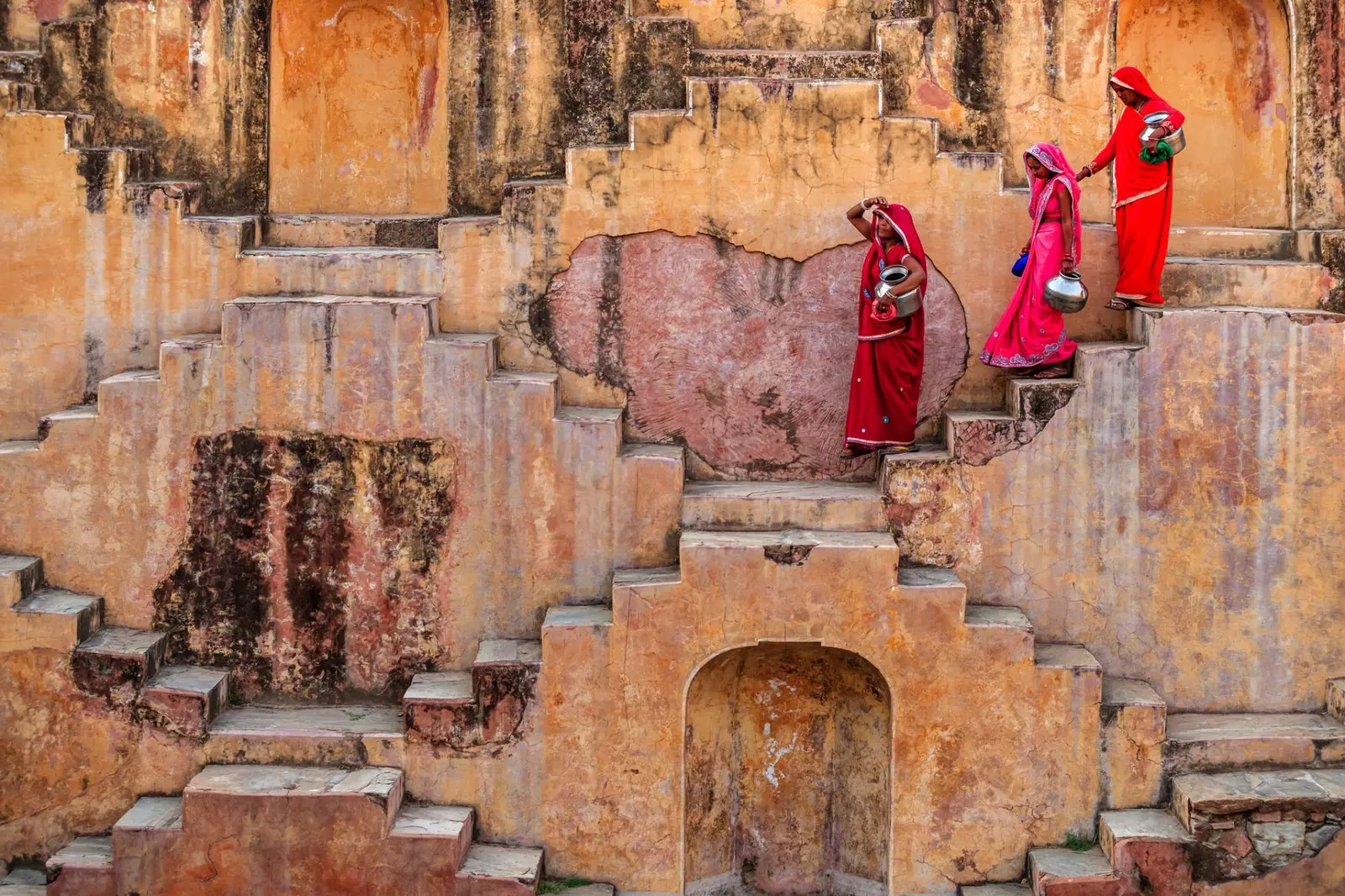
Women carrying water near Jaipur.
Because of its size, India is considered a subcontinent. So large and unfathomable that, for a first approximation of a few days, it will be advisable to opt for an area that unites all its essence.
** Delhi, Agra and Jaipur make up the Golden Triangle,** an area in the north of the country that is perfect for getting started. Full of contrasts and historical monuments, the Golden Triangle offers unique experiences (getting into a rickshaw, living Bollywood, getting lost in the bazaars) . Essential experiences to succumb to the charms of India or, on the contrary, end up hating it.
Because we are not going to deny it, India is a destination of mixed feelings. Of smells, flavors and images that, for better or worse, penetrate deeply. Of peculiar customs such as venerating cows, chewing betel leaves, sharing the route with monkeys and elephants, surpassing oneself in mustache styling or rocking one's head sideways to say yes with an almost magnetic movement.
But India is also dirt, chaos and poverty. With all that, we want to meet you. We want to delve into its history, Let ourselves be impregnated by its traditions, try its gastronomy and decide, for ourselves, if we want to be caught.
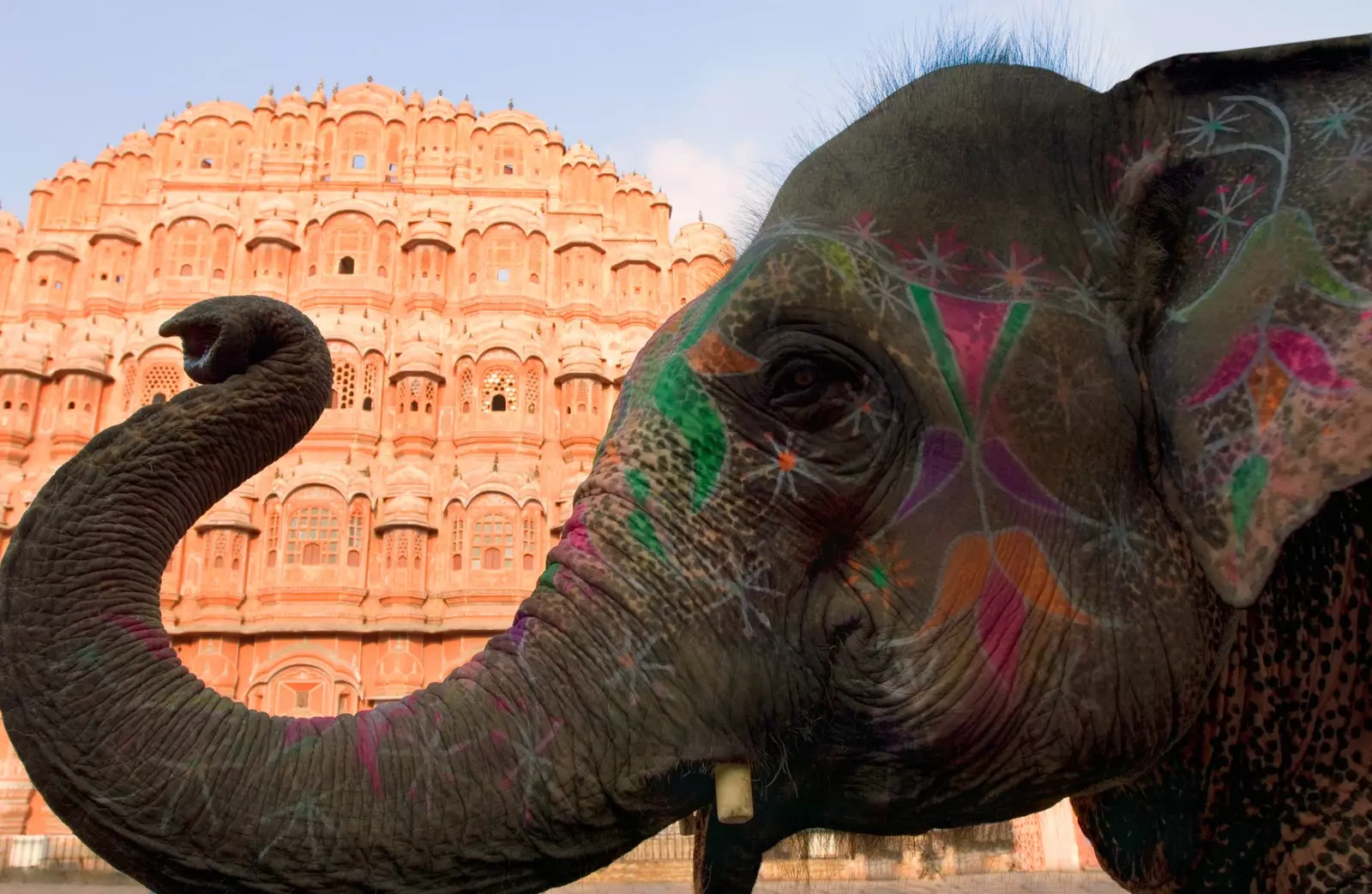
Elephant in front of the Hawa Mahal palace in Jaipur.
DELHI, CONTRAST OF CONTRASTS
New Delhi is one of the main cities entrance to the country and the best starting point to live a detailed introduction to its culture and customs.
As soon as we land in the capital of India, we must update our clocks UTC +5:30. Yes, with that shocking half hour more.
We are ready to get into a rickshaw and jump From Contrast To Contrast, from the chaotic neighborhood of Old Delhi to the modernity of Rajpath Boulevard.
In Old Delhi we will walk through Chandni Chowk to the Red Fort, making our way through the crowds and chaos, passing through the smells of the spice market and trying on a sari.
Meanwhile, in Rajpath, we will take a peaceful walk under the trees of this great avenue where India Gate, Parliament and other important government buildings.
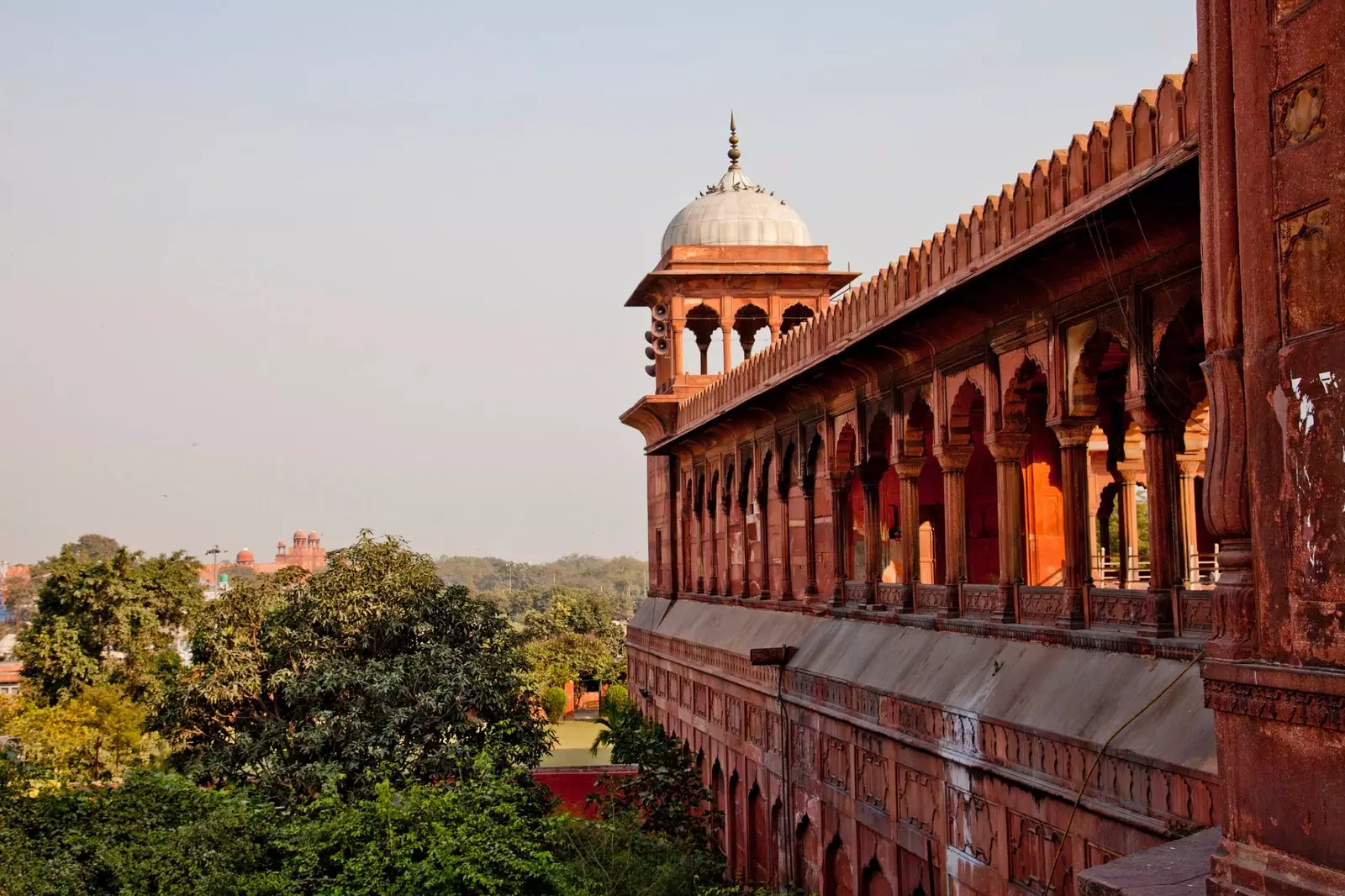
Jama Masjid with the Red Fort in the background, in Delhi.
Contrasts are also present in neighborhoods such as Aerocity, located next to the airport. On one side of the road they share hostels for backpackers and on the other the big hotel chains next to shopping centers, offices and restaurants of all kinds. We can taste traditional cuisine with modern touches while enjoying a live concert at Farzi Café (Worldmark 3, GF 01 & FF 01, Aerocity).
Two very different worlds at a very short distance follow one another in Delhi, making it one of the most complete and entangled examples of smells, tastes and experiences that we will find in the country.
Must-sees include the Mezquiza Jama Masjid and Humayun's Tomb, the second monarch of the Mughal Empire. The latter is considered by some to be the forerunner of the Taj Mahal. Tourism barely reaches it, so it is a bit abandoned, but thanks to that we can enjoy, alone and in the shadows, the geometric World Heritage mausoleum.
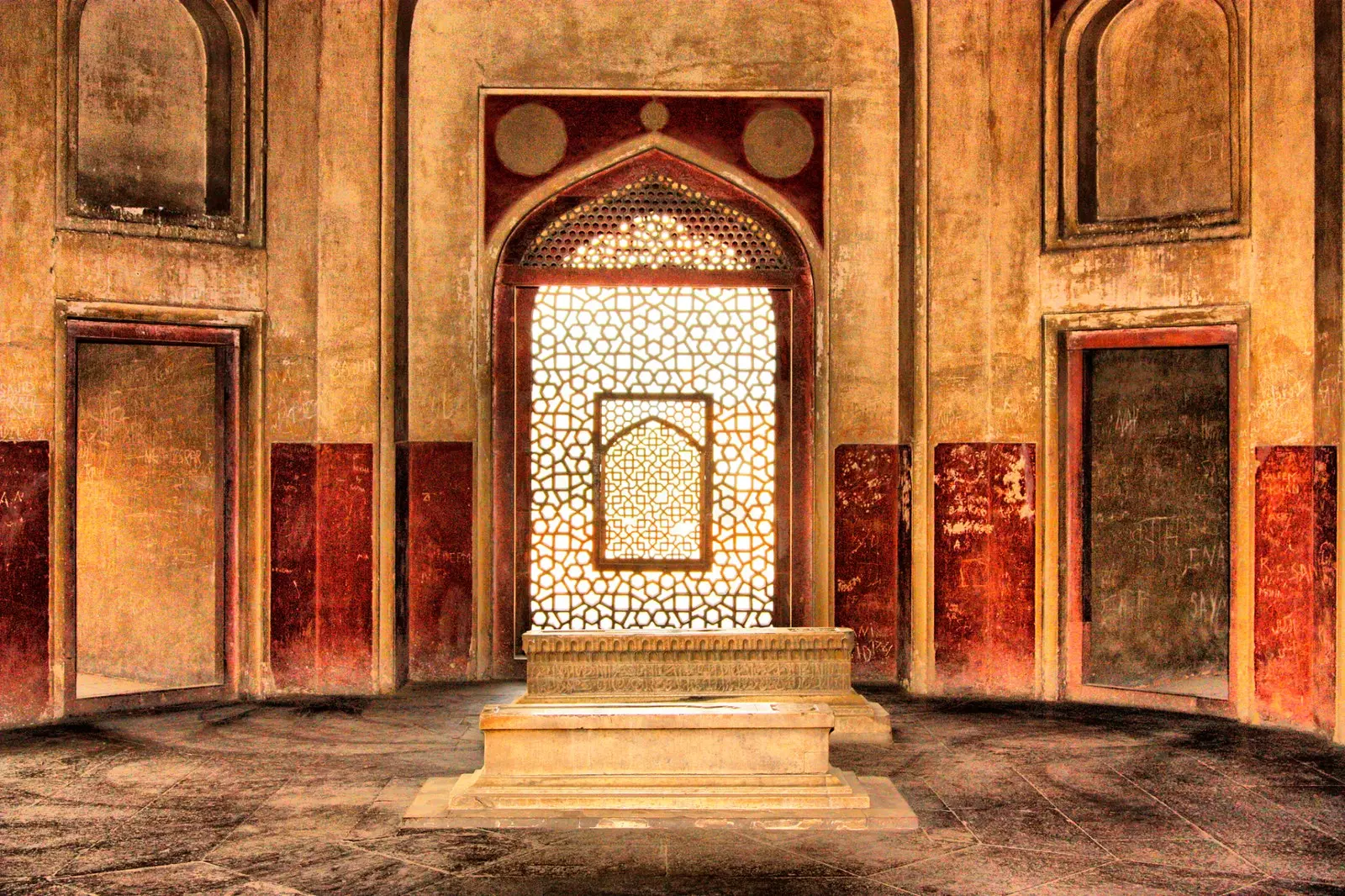
Interior of Humayun's Tomb, a clear example of Mughal architecture.
We can't miss the akshardham hindu temple at sunset, when the sun reflects on its facade before leaving us with the spectacular night lighting.
The stunning and ornate Akshardham religious center was opened in 2005 thanks to the work of 7,000 artisans and 4,000 volunteers. We will access it with the fear of leaving our cameras and mobile phones in a huge locker at the entrance. You can't take pictures inside and it's a shame, because the site has fabulous perspectives to be captured on camera. It doesn't matter, so we can concentrate on capturing them with our eyes.
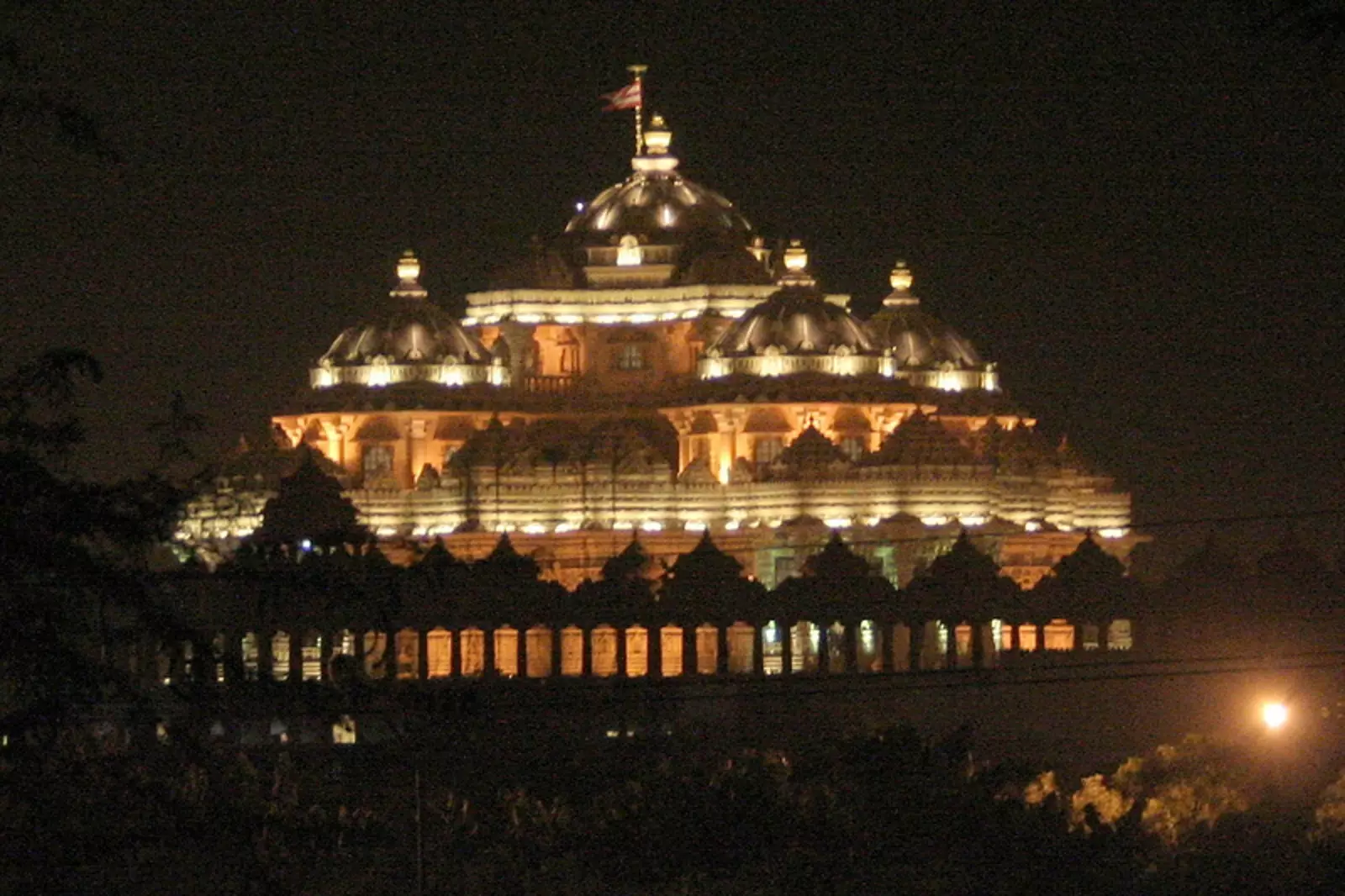
The mighty Akshardham Hindu temple at night.
AGRA, THE CITY OF THE TAJ MAHAL
The road from Delhi to Agra is one of the best and quietest in the country. Even so, we will be hit by driving on the left side and having to dodge the cows that cross our path.
In Agra we will find India's most special and symbolic monument, the Taj Mahal. It doesn't matter how many times we've seen it in pictures. Standing in front of the majestic marble building and seeing how it is reflected in the surrounding ponds will undoubtedly move us.
The mausoleum that Emperor Sha Yahan had built as gift for his great love, Mumtaz Mahal, converted into heritage for the enjoyment and excitement of all mankind.
From the nearby Agra Fort we can also capture the beautiful silhouette of the Taj Mahal along the Yamuna river. Perhaps one of his most beautiful prints.
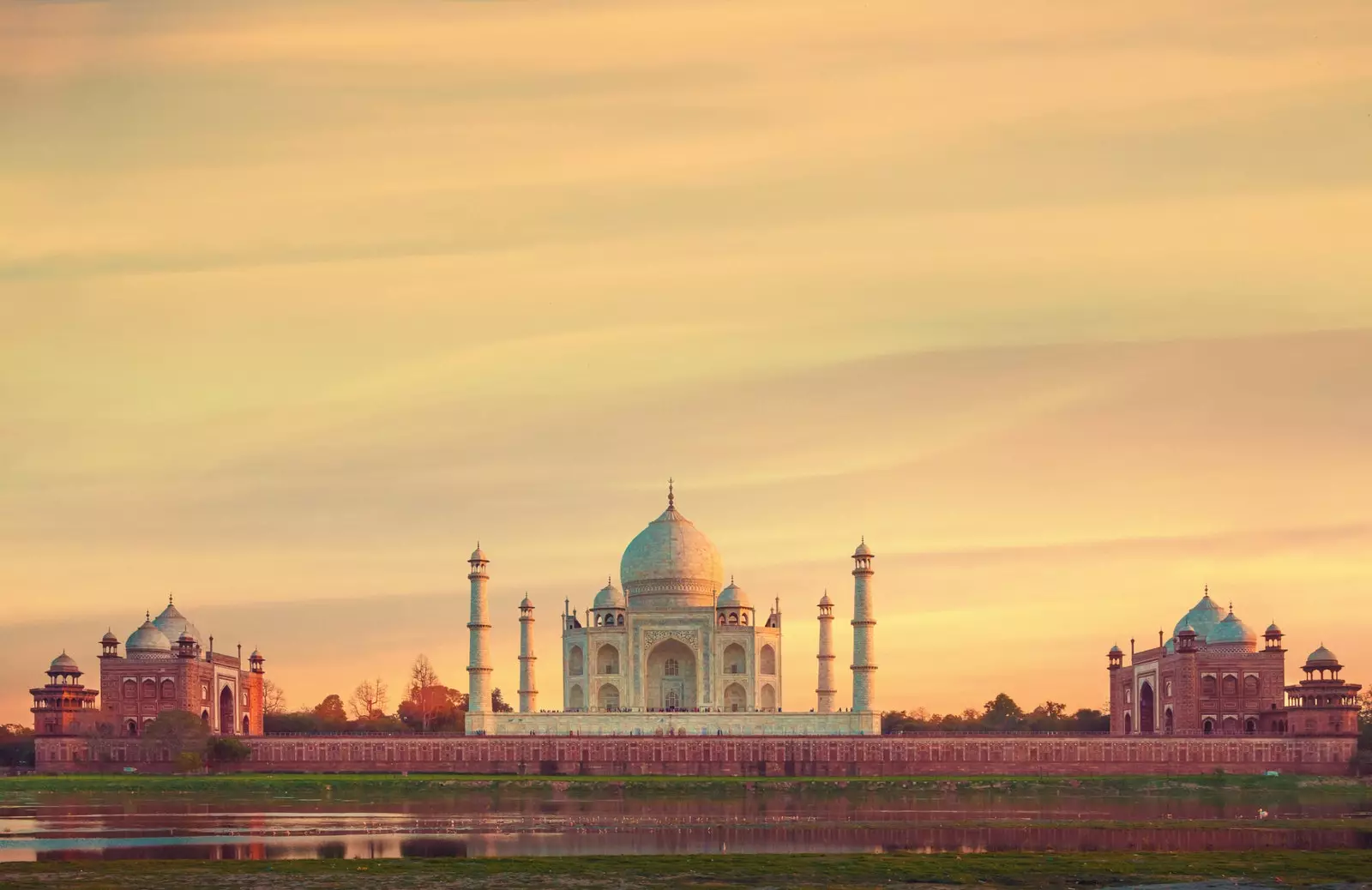
The symbolic Taj Mahal at sunset.
After the tourist visits, it is time to continue tasting the local gastronomy, and if it can be in an establishment with views of the Taj Mahal, such as Taj Terrace, all the better. Of course, we must always be prepared for the excessive amount of spice in the food (if you ask for a slightly spicy dish, be sure that it will have a medium-high level of spiciness) . Remember that cows are sacred, so you will not find dishes that contain beef.
We continue the route to Jaipur, but on the way we stop at Fatehpur Sikri, the ancient capital of the Mughal Empire. It is a city founded by Emperor Akbar in the 16th century, which stands out for its reddish stone buildings. Enchanting ourselves with the architecture of the time, among the infinite nooks and crannies that Fatehpur Sikri hides, will be our mission in the place.
The most important building in the ancient capital of the Mughal Empire is the mosque, ordered to be built by the emperor in honor of one of his three wives for having given him a son.
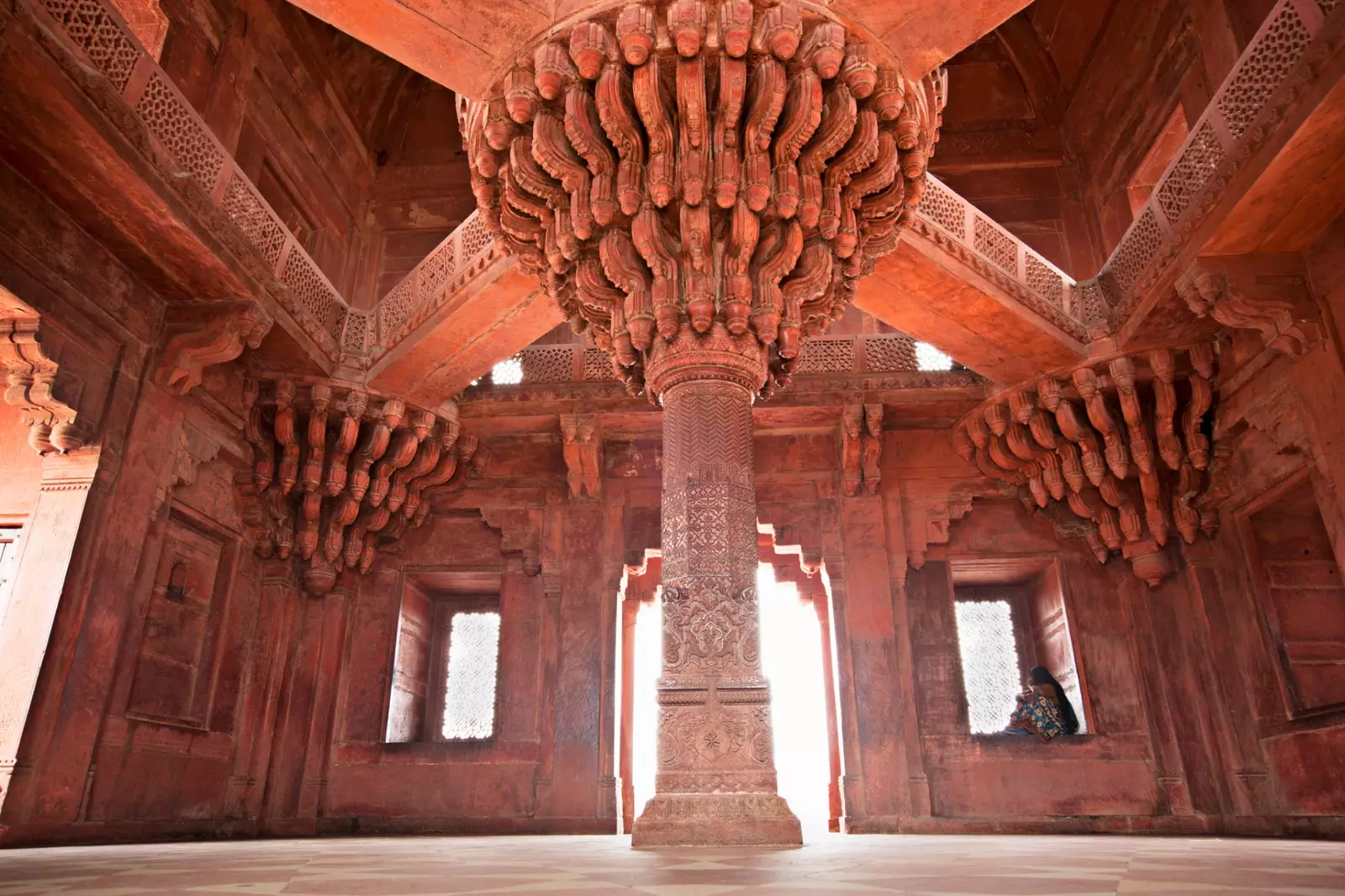
One of the majestic columns of Panch Mahal, in Fatehpur Sikri.
THE PHOTOGENIC JAIPUR
Avoiding the dreaded traffic on the highways, where cars, trucks and motorcycles make their way while avoiding cows and even elephants, we arrive at Jaipur, the capital of the state of Rajasthan. Of course, getting carried away by the adrenaline that can be felt on the roads of the country is something that every traveler should experience.
The pink city – the color chosen by Maharaja Singh to paint the buildings before the visit of Prince Albert of Wales – is photogenic in abundance. Photogenic led by the facade of the Palace of the Winds, Hawa Mahal, which was built in 1799 as a room for the palace's harem. From their 953 windows, women could watch the street life without being seen. Getting tired of taking photos with the instagrammable Jaipur filter, here it will make all the sense in the world.
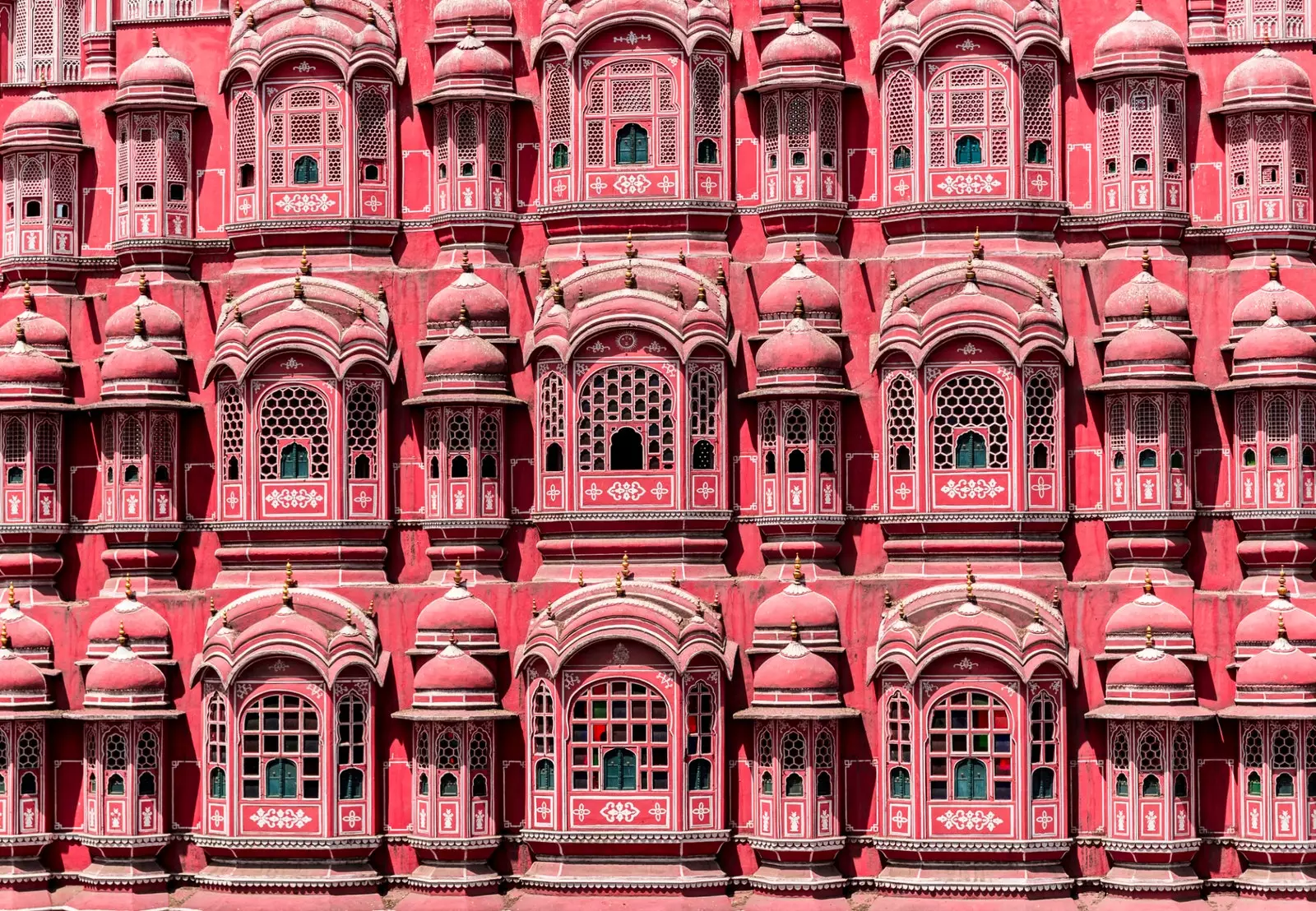
Hawa Mahal or Palace of the Winds, in Jaipur.
In addition to the City Palace, which served as the residence of rulers since the 18th century, and Jantar Mantar, a curious astronomical observatory from the same century, we approach less touristy places, such as the royal tombs Royal Gaitor, one of the points chosen by couples for their photo sessions.
Temples like Birla Mandir, all in marble and dedicated to the god Visnu and his wife, or Moti Dungri presided over by Ganesh, an orange elephant with a human body to which Hindus make constant offerings, will be perfect for discovering the curious deities of the Hindu religion.
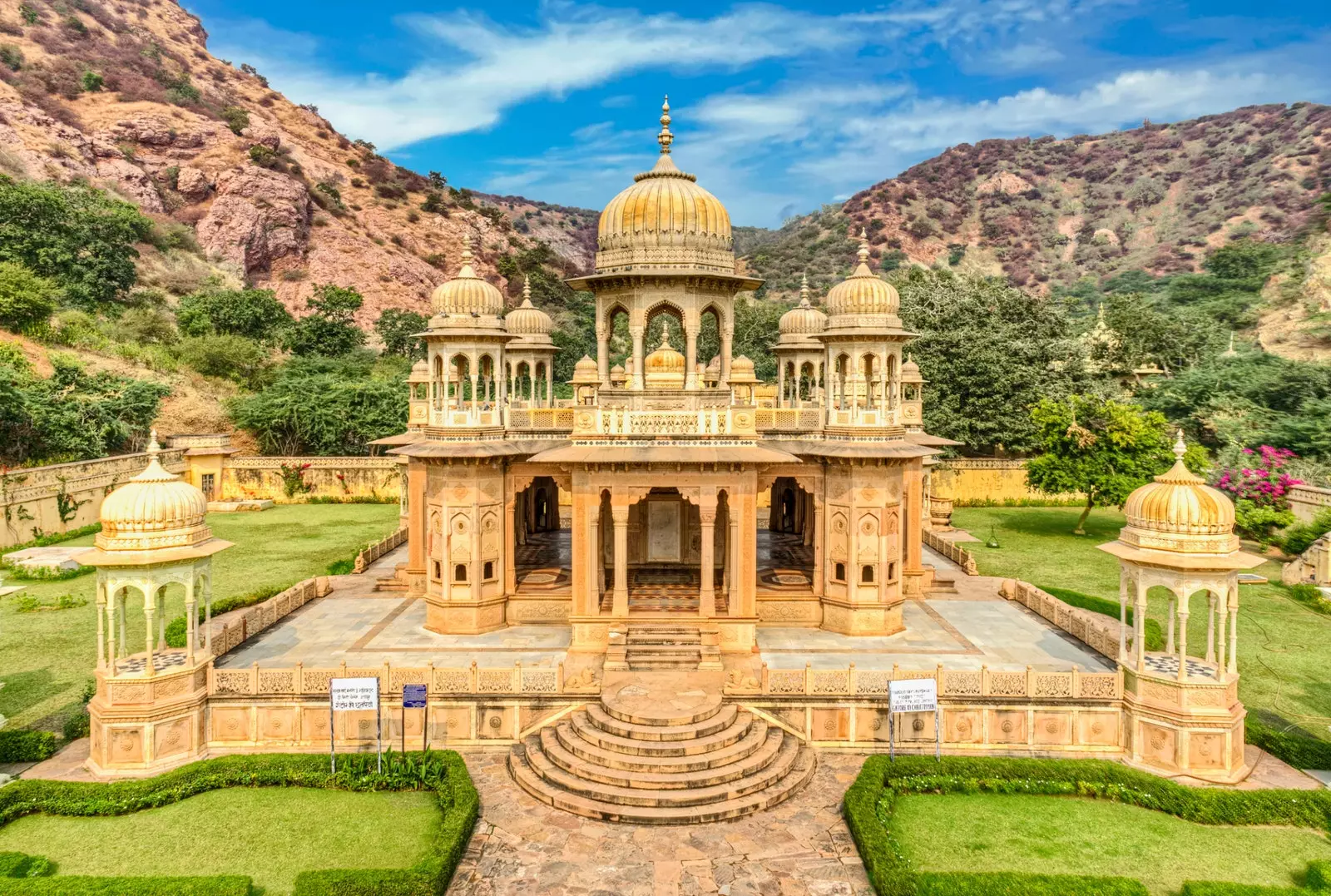
Nestled between mountains are the royal tombs Royal Gaitor.
Nor can we forget the colorful bazaars grouped by guilds in the old city, ideal for, between haggling and haggling, immersing yourself in local life: Bapu for clothing and footwear, Chandpole for food, Tripolia for household items, Johari for jewelry...
To sleep we chose to do it in a palace converted into a hotel. Is there a better experience than feeling like a maharajah? Jaipur has several palaces in which to stay, but why not choose the oldest in the city?
The Raj Palace is a true oasis in the midst of the hustle and bustle. An oasis with an exciting history behind it that permeates the old but elegant rooms of the long-lived 300-year-old building. After a great rehabilitation, he was opened as a hotel in 1996 by Princess Jayendra Kumariji, current owner of the palace. Its corridors house a complete collection of antique objects ranging from valuable jewelery to stacks of cassettes and VHS tapes.
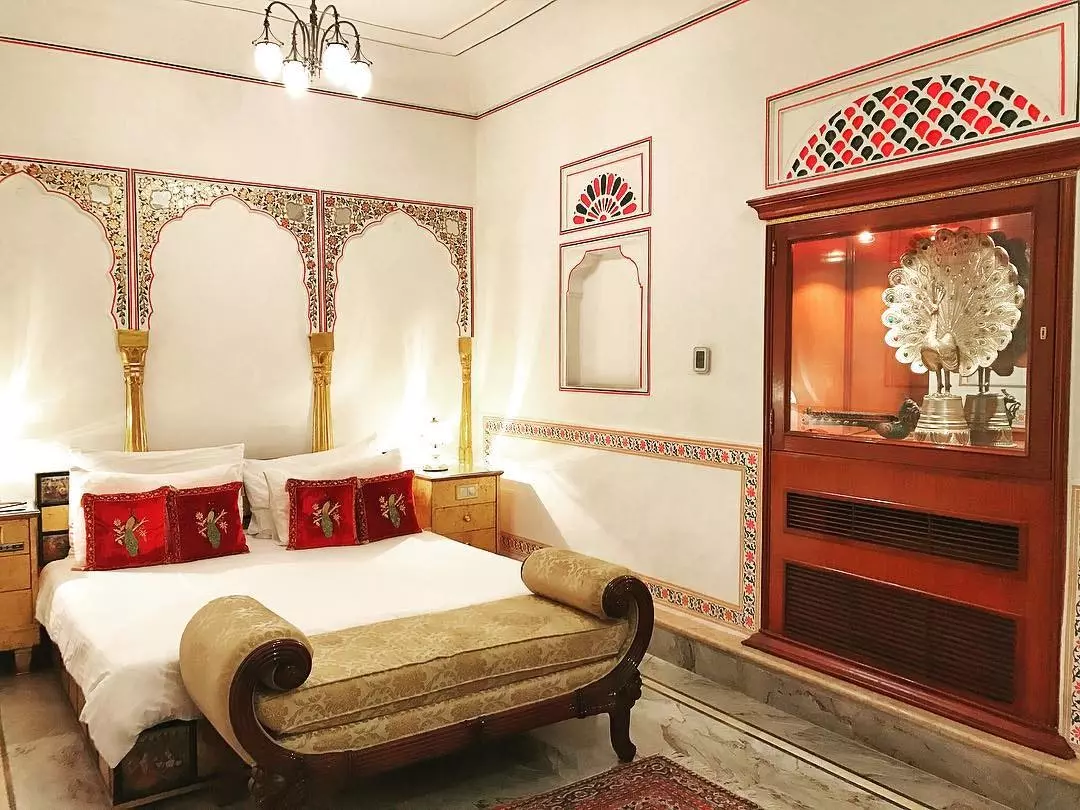
Suite at The Raj Palace, a palace converted into a hotel.
There is also time for leisure and **in India leisure is synonymous with cinema, Bollywood. ** In Jaipur we will find the best room to experience the movies among the spectators. We are talking about Raj Mandir, a retro building as pink as the rest of the city.
The undulating forms of its façade, among which the posters of the film that is being projected are exhibited, already predict an afternoon full of fun. Inside, an ostentatious hall gives access to the different categories of rooms. On the top floor awaits the superior category for about five euros to change, with comfortable reclining seats and a small cafeteria at the entrance.
But it's when the movie starts that the show really begins. The cheers, the laughs and the boos of the public are the true protagonists in Bollywood cinema. Everything is celebrated and it does not matter if the movie is a romantic comedy or an action for the actors to start singing and dancing.
When we have already explored Jaipur, we can start with its surroundings. Jal Mahal, a palace that seems to float in the center of a lake, It is the first of the surprises when leaving the city. The Shiromani temple, the stepped well of Panna Meena or the Jaigarch fort, which exposes what is said to be the largest cannon in the world, are some more.
To finish, we went to the Amber Fort, 10 kilometers from Jaipur. Surrounded by long walls that wind solemnly through the hills of Rajasthan, this fort-palace home to the Kachhwaha dynasty is one of the most complete and impressive visits. Pretty labyrinthine gardens and pavilions, each one more imposing, they record that geometry governs traditional architecture in India. With the comfortable views from Amber we say goodbye to a country that has captivated us. And it is that, in life, everything is a matter of expectations.
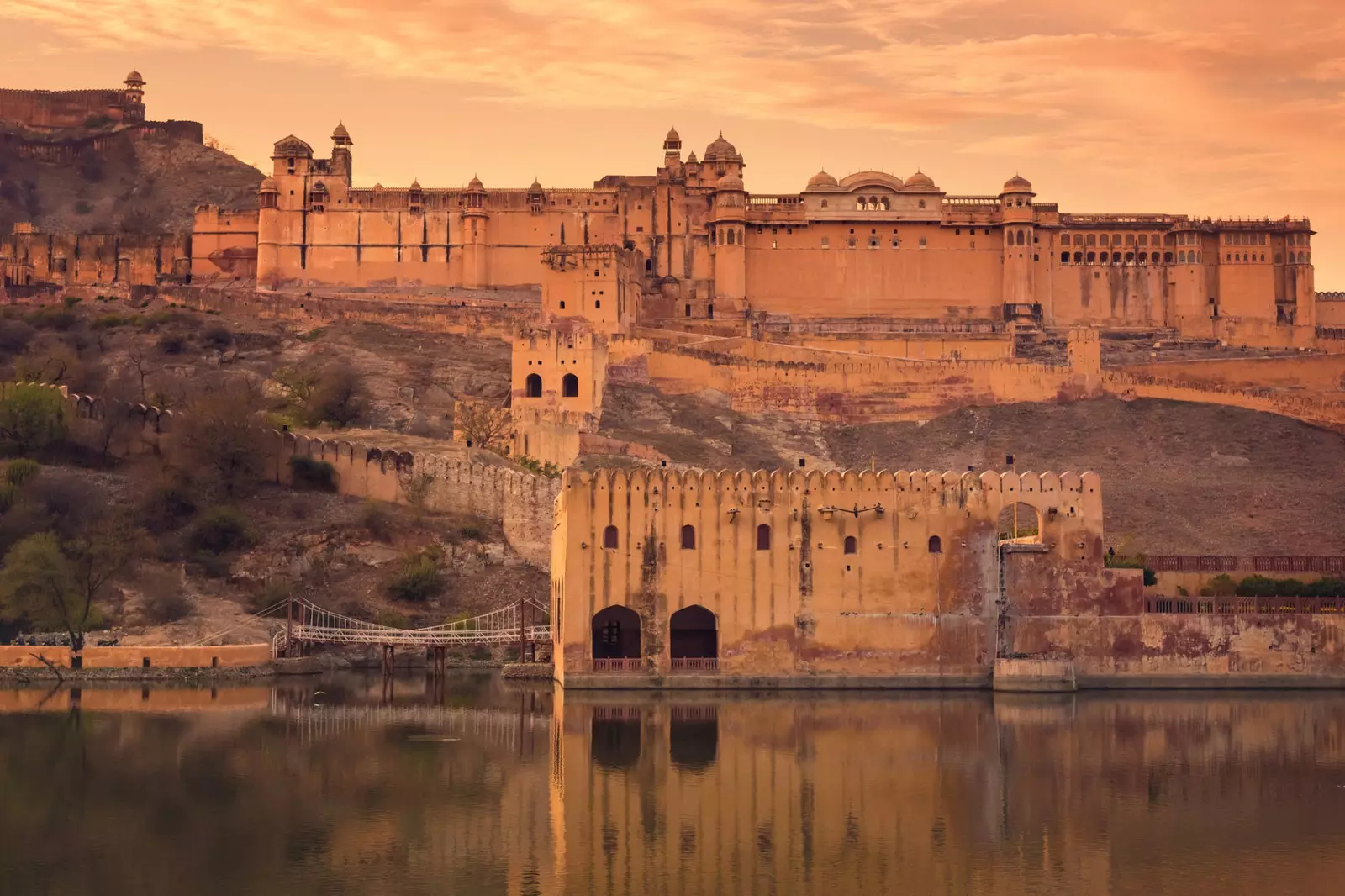
Amber Fort is a few kilometers from Jaipur.
